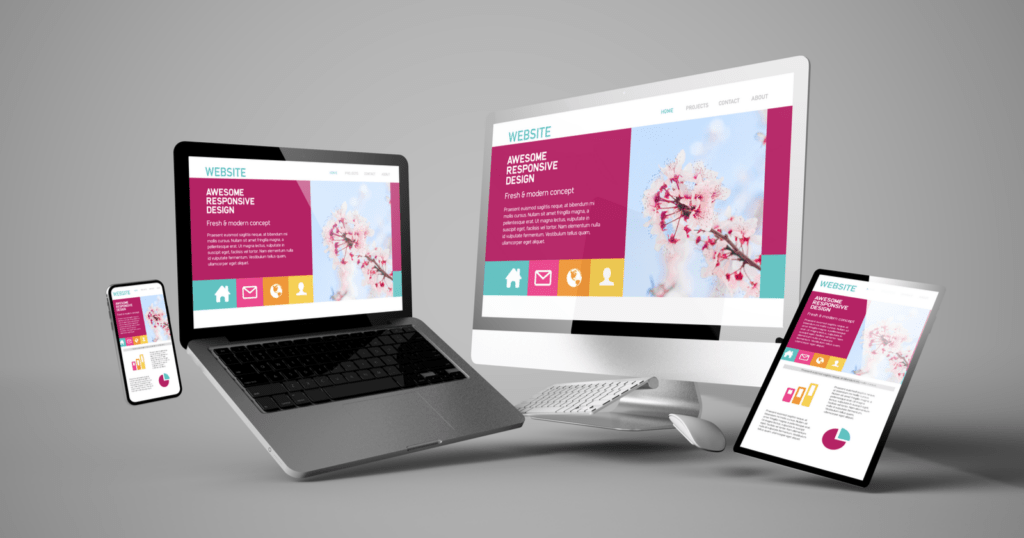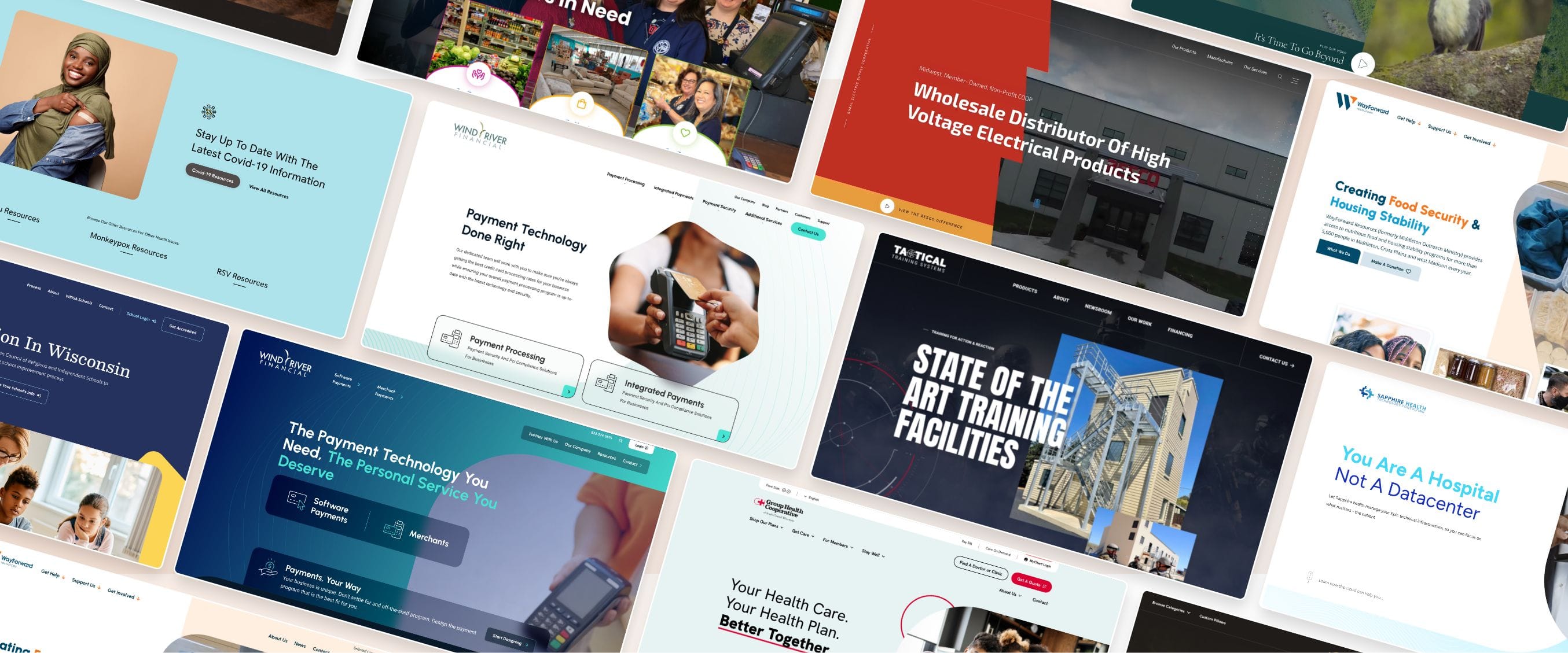Why Choosing the Right Website Design Can Make or Break Your Online Reputation
Why Choosing the Right Website Design Can Make or Break Your Online Reputation
Blog Article
Modern Site Design That Records Interest and Transforms
In a significantly digital landscape, contemporary web site design has arised as a critical aspect in recording customer attention and driving conversions. As we check out these crucial components, it ends up being clear that understanding their interplay can substantially influence a site's performance and individual contentment.
Relevance of Visual Pecking Order
Visual power structure is a crucial element in website layout, as it overviews individuals' focus and improves their overall experience. By purposefully organizing material, developers can guide customers to the most essential details first, therefore raising engagement and boosting usability.
Incorporating a sensible flow in web content arrangement is necessary; for instance, putting one of the most vital details at the top of a web page fosters immediate recognition. Regular use of typography, such as varying font dimensions and designs, helps develop a clear web content structure. This organization not just aids in navigation however additionally builds trust fund, as users feel extra comfy when they can easily locate what they are searching for.
Eventually, a well-executed aesthetic power structure not just boosts visual allure but additionally considerably affects customer actions. By prioritizing essential elements and ensuring a seamless experience, designers can effectively convert site visitors into customers, strengthening the significance of this fundamental style principle in modern-day site development.
Responsive Design for All Devices
Creating a seamless experience across different gadgets is necessary in today's electronic landscape, where users access internet sites from desktops, smart devices, and tablet computers alike. Responsive design is a vital method that ensures sites adjust fluidly to various screen dimensions, resolutions, and positionings. By employing flexible grids, photos, and CSS media inquiries, developers can develop formats that preserve aesthetic stability and functionality, despite the gadget being used.
The relevance of responsive style prolongs past aesthetic appeals; it directly affects user involvement and conversion prices. A site that operates well on all gadgets motivates longer visits and minimizes bounce prices, as individuals are more probable to connect with content that is simple to navigate. Search engines, particularly Google, focus on mobile-friendly websites in their rankings, making responsive style an essential component of search engine optimization (SEO)
Including responsive design not only boosts customer experience however additionally streamlines the advancement procedure. By developing a solitary website that functions across tools, services can conserve time and sources contrasted to developing different mobile and desktop versions. Eventually, responsive design is a basic strategy for modern website design, guaranteeing accessibility and satisfaction for all individuals, regardless of their tool.
Engaging Interactive Aspects
While a receptive layout lays the foundation for a useful internet site, including interesting interactive aspects is critical for capturing user attention and cultivating much deeper connections. Website Design. Interactive aspects, such as animations, quizzes, and clickable infographics, develop a more vibrant customer experience, urging site visitors to spend even more time on the site
Including interactive attributes can likewise direct users through facility details, making it less complicated to digest web content. For example, interactive sliders can illustrate item variations, while embedded video clips can supply presentations or reviews that resonate more than fixed images or message. Furthermore, gamification techniques, like incentives for involving or completing jobs with web content, can improve customer motivation and retention.
Effective use of interactive components not only improves the customer experience however can likewise lead to greater conversion rates. By making interactions satisfying and helpful, organizations can grow a sense of commitment and trust with their audience. It is vital to stabilize interactivity with performance; extremely complicated functions might prevent website speed, adversely affecting user contentment. Eventually, incorporating properly designed interactive aspects can dramatically boost an internet site's efficacy, driving involvement pop over here and conversions in today's competitive digital landscape.
Streamlined Navigation Practices
Efficient navigating is a foundation of any kind of effective web site, as it directly influences user experience and content availability. Streamlined navigation methods ensure that customers can quickly locate info, enhancing their communication with the website. A well-structured navigation food selection need to be user-friendly and straightforward, typically including a limited variety of primary classifications to prevent frustrating site visitors.
To achieve streamlined navigation, designers should focus on an ordered structure that logically organizes content. Carrying out breadcrumb trails can supply individuals with context regarding their present area within the website, permitting smooth backtracking. Additionally, using drop-down menus can efficiently save area while still supplying access to subcategories.
Responsive layout is crucial, as navigating needs to be useful throughout all devices (Website Design). Mobile individuals, specifically, take advantage of touch-friendly food selections and retractable sections that preserve functionality without compromising visual appeals

Efficient Call-to-Action Techniques
A well-crafted call-to-action (CTA) is important for guiding customers towards desired outcomes on a site, as it motivates them to involve with web content or buy. To optimize their efficiency, CTAs need to be clear, compelling, and purposefully positioned throughout the site.
First, make use of action-oriented language that communicates necessity or value, such as "Begin," "Sign up with Now," or "Claim Your Discount." This language not just motivates users however additionally establishes clear assumptions concerning the following read the article steps.
2nd, consider style aspects; CTAs should stand out visually with contrasting shades, enough whitespace, and check my blog famous positioning. A switch that is simple to see and click rises the chance of user interaction.
Furthermore, customizing CTAs based upon customer behavior or demographics can substantially improve involvement. Tailored messages reverberate a lot more with customers, driving greater conversion rates.

Conclusion
In final thought, modern-day web site layout emphasizes the combination of aesthetic power structure, responsive formats, involving interactive elements, streamlined navigation, and efficient call-to-action methods. These components collectively improve customer experience, making certain that site visitors remain engaged and motivated to check out material better. By prioritizing these style principles, organizations can significantly improve customer retention and conversion rates, ultimately resulting in higher success in the digital landscape. The continuous development of website design emphasizes its essential duty in effective online communication and advertising.
In an increasingly electronic landscape, modern-day internet site layout has actually emerged as a pivotal factor in capturing customer interest and driving conversions.Visual hierarchy is an essential element in site design, as it overviews users' focus and improves their overall experience.The relevance of responsive style extends past visual appeals; it directly influences individual involvement and conversion rates.Incorporating responsive layout not only boosts individual experience yet additionally simplifies the development procedure. Eventually, receptive design is an essential strategy for modern-day site layout, ensuring access and fulfillment for all users, regardless of their device.
Report this page